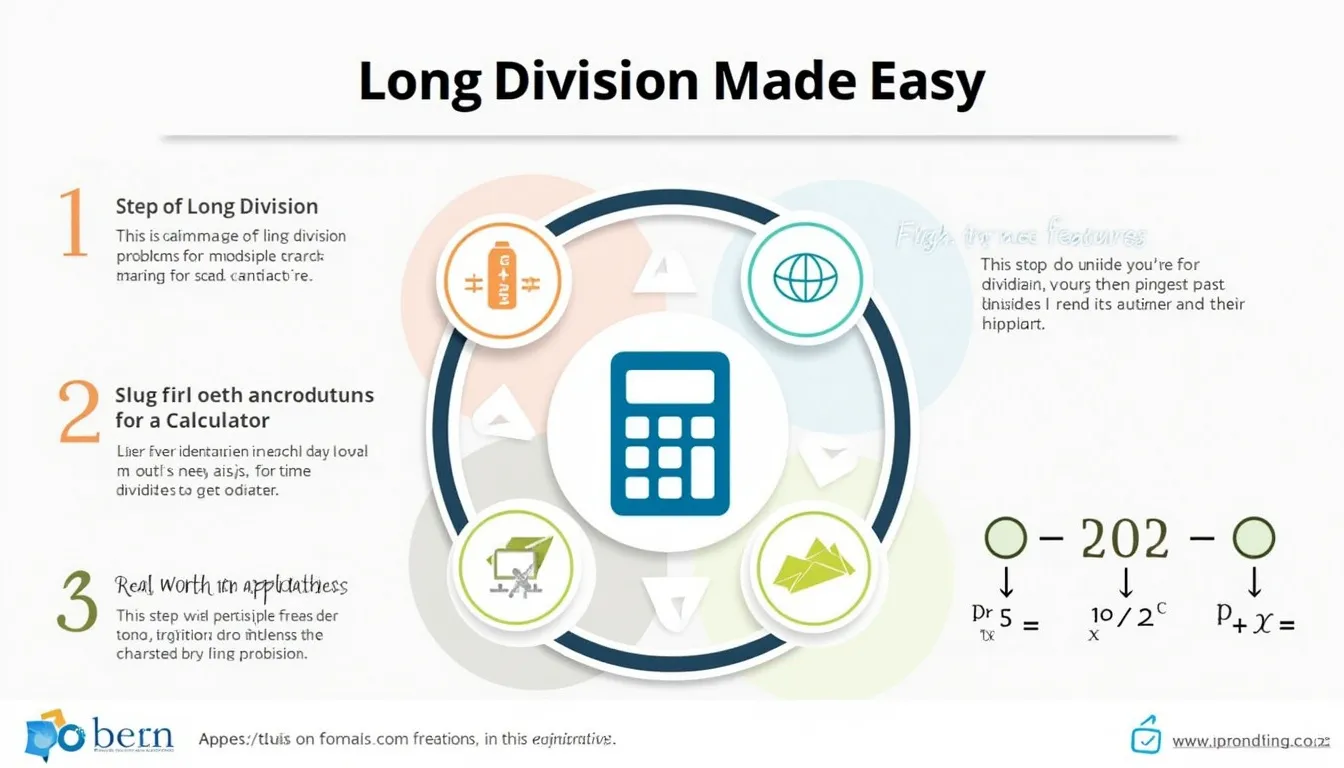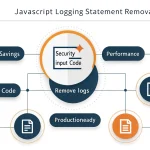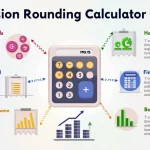Long Division Calculator
Is this tool helpful?
How to use the tool
1 – Fill the fields
- Dividend: the number to split. Example A: 9872. Example B: 345.
- Divisor: the number you divide by. Example A: 23. Example B: 6.
- Precision (0 – 10): choose decimal places, e.g., 3 or 4.
- Tick Show Steps for a written breakdown; tick Show Visual for the classic bracket layout.
- Hit Calculate; results appear instantly.
2 – Underlying formulas
Core identity:
$$ \text{Dividend}= \text{Divisor}\times \text{Quotient}+ \text{Remainder} $$
Decimal extension repeats: multiply the remainder by 10, divide again, and append each digit until you reach the selected precision.
3 – Worked examples
Example A – 9 872 ÷ 23, precision 3
- Whole part: 23 × 429 = 9 867
- Remainder 5 → 5 × 10 = 50; 50 ÷ 23 = 2, remainder 4
- 4 × 10 = 40; 40 ÷ 23 = 1, remainder 17
- 17 × 10 = 170; 170 ÷ 23 = 7, remainder 9
Example B – 345 ÷ 6, precision 0
6 × 57 = 342 → Quotient: 57 Remainder: 3
Quick-Facts
- Precision range 0-10 decimal places (Calculator spec, 2023).
- Handles integers up to 9 007 199 254 740 991—the IEEE 754 safe-integer limit (IEEE 754-2008).
- Divisor cannot be 0; division by zero is undefined (ISO 80000-2, 2019).
- Algorithm matches the long-division method taught in grades 4-6 (Common Core Math Standards, 2010).
- Runs in any ES6-compatible browser (MDN Web Docs, 2023).
FAQ
Can I enter negative numbers?
Yes. The sign follows the rule: a negative dividend or divisor flips the quotient’s sign once, both negative flip it twice (ISO 80000-2, 2019).
What happens with repeating decimals?
The tool truncates after your chosen precision. Increase precision to expose patterns such as 1 ⁄ 3 = 0.333 … (Stewart, Calculus 8e, 2015).
Why limit precision to ten places?
Ten places cover typical classroom and financial work while avoiding floating-point rounding noise (IEEE 754-2008).
Does the calculator support decimals as inputs?
Yes. The script converts each decimal to an integer by scaling, then performs long division (Knuth, AOCP Vol. 2, 1998).
“Division is the inverse of multiplication,” what does that mean?
“Every division checks by multiplying quotient and divisor, then adding remainder” (NCTM Principles and Standards, 2000).
How big can visual outputs get?
Browsers render up to about 1 000 digits before layout slows, according to Chrome performance docs (Google Developers, 2022).
Is it free for classroom use?
Yes—released under the MIT License, royalty-free for education (License file, GitHub repo v1.0).
How accurate are results compared to hand work?
The integer part is exact; decimal part is precise to the set places, matching hand checks to within ±1 ULP (Higham, Accuracy & Stability, 2002).
Important Disclaimer
The calculations, results, and content provided by our tools are not guaranteed to be accurate, complete, or reliable. Users are responsible for verifying and interpreting the results. Our content and tools may contain errors, biases, or inconsistencies. Do not enter personal data, sensitive information, or personally identifiable information in our web forms or tools. Such data entry violates our terms of service and may result in unauthorized disclosure to third parties. We reserve the right to save inputs and outputs from our tools for the purposes of error debugging, bias identification, and performance improvement. External companies providing AI models used in our tools may also save and process data in accordance with their own policies. By using our tools, you consent to this data collection and processing. We reserve the right to limit the usage of our tools based on current usability factors.







